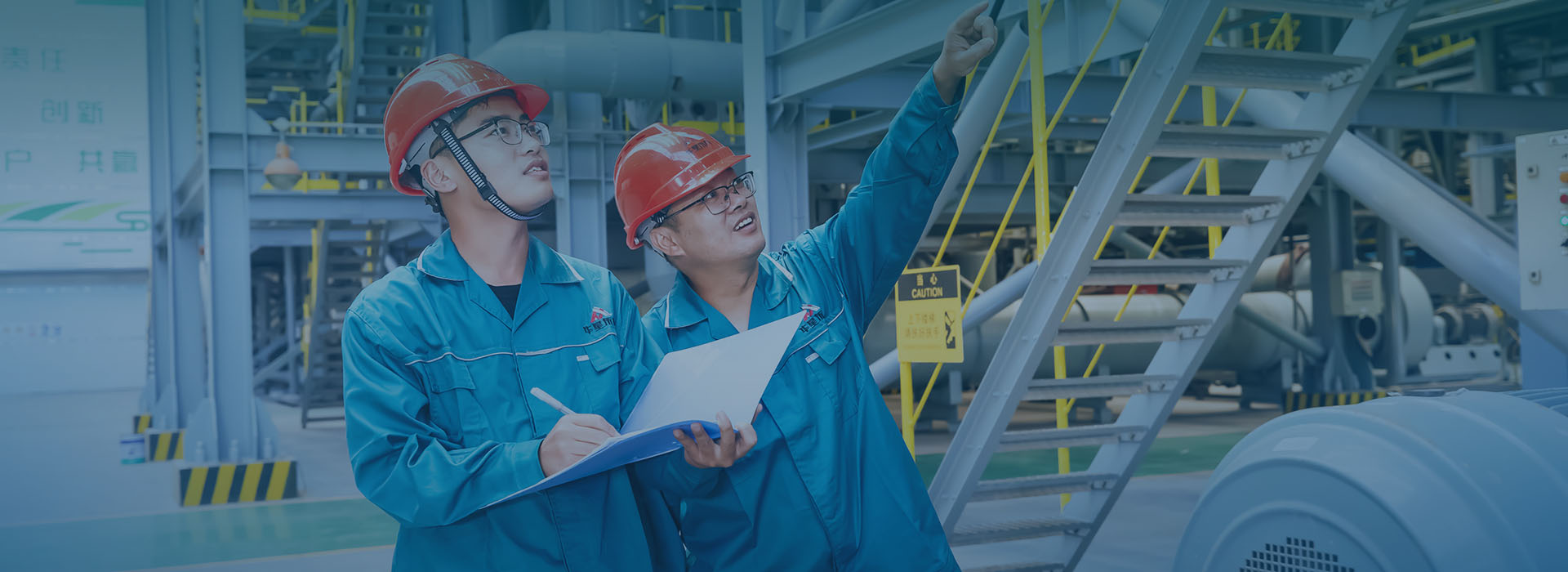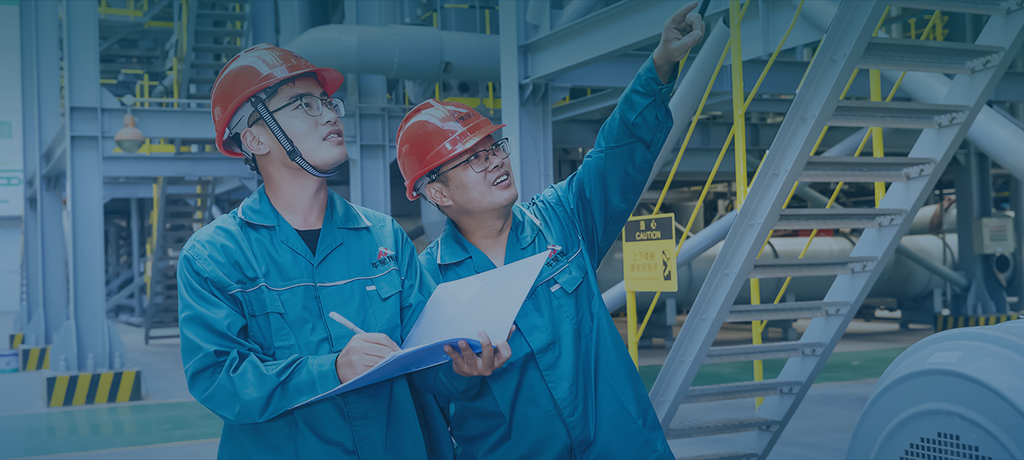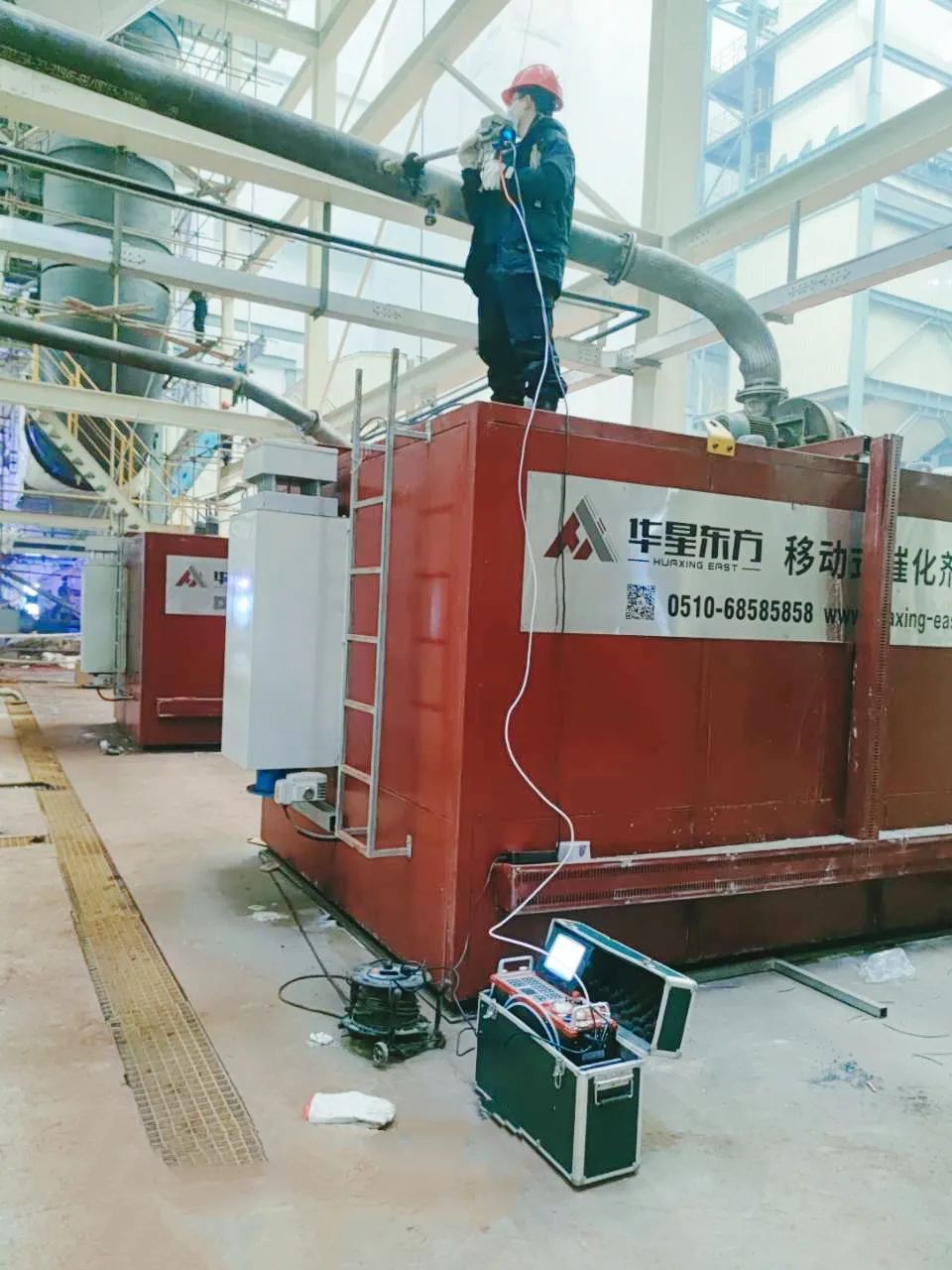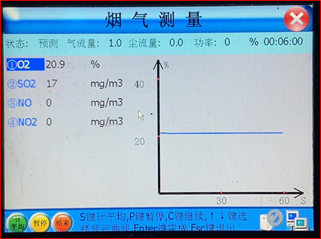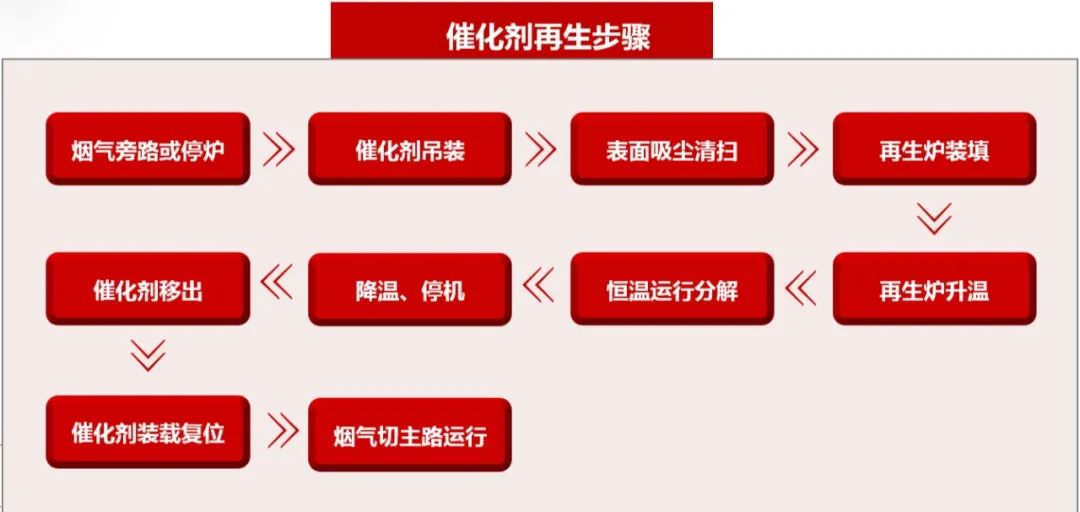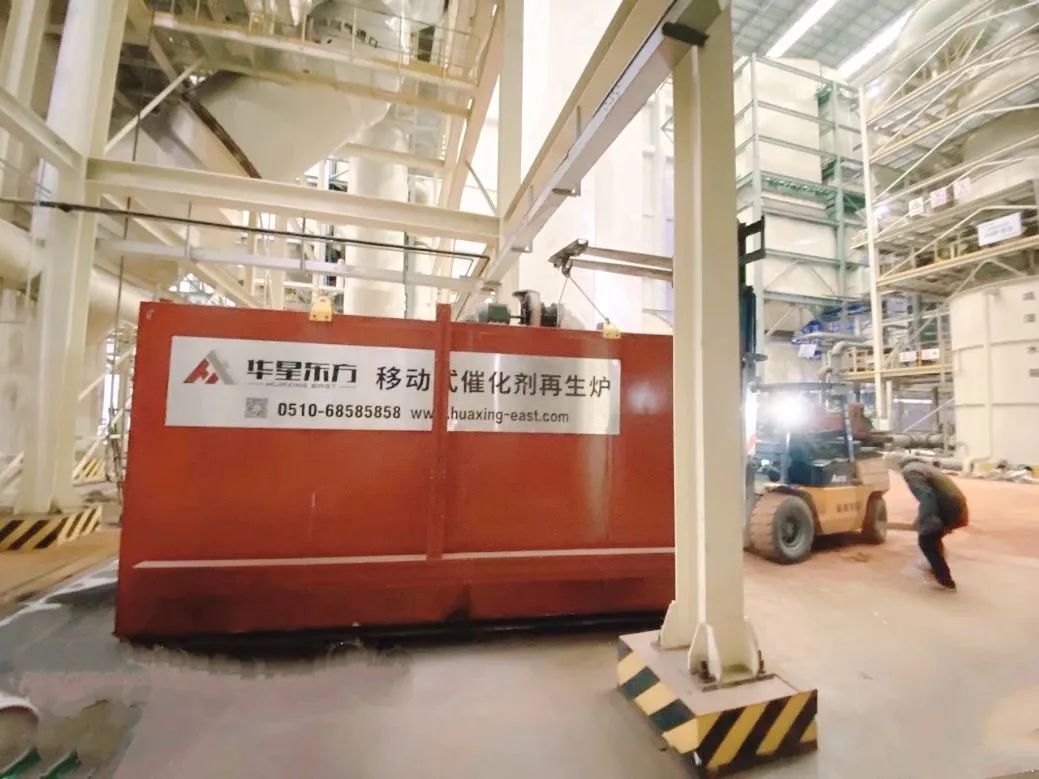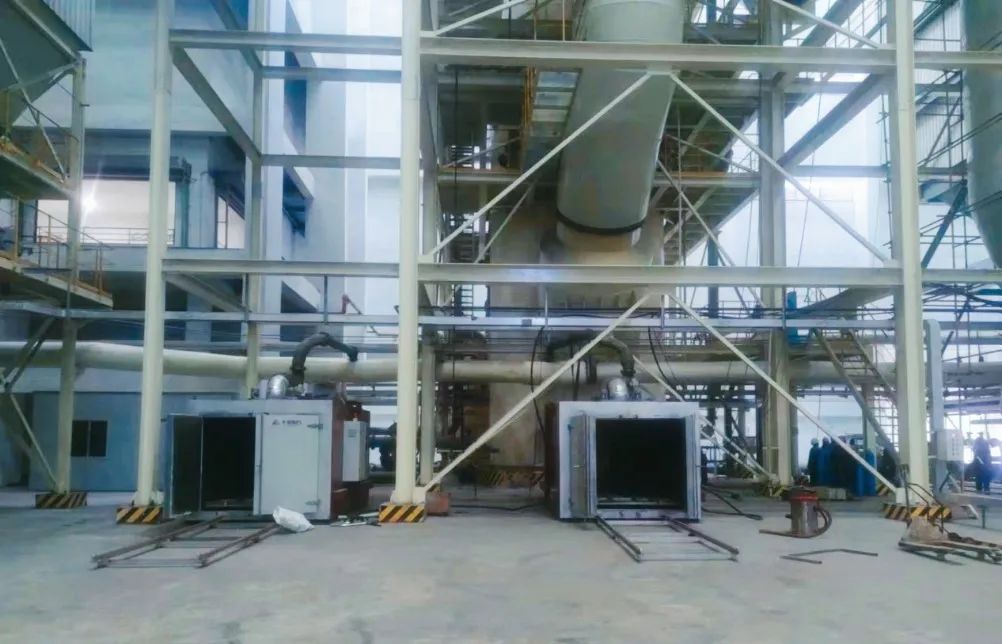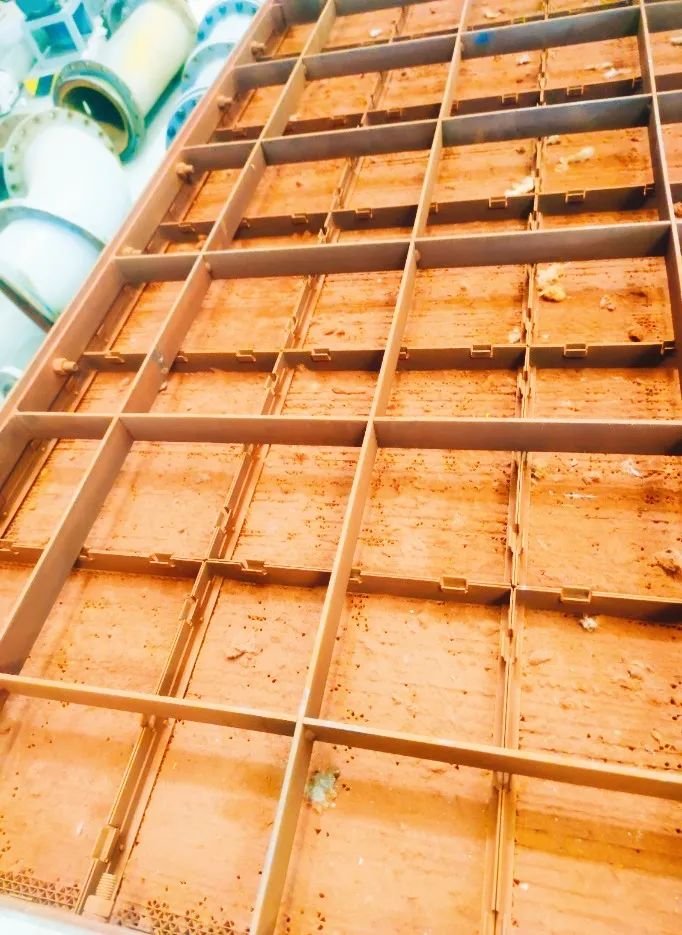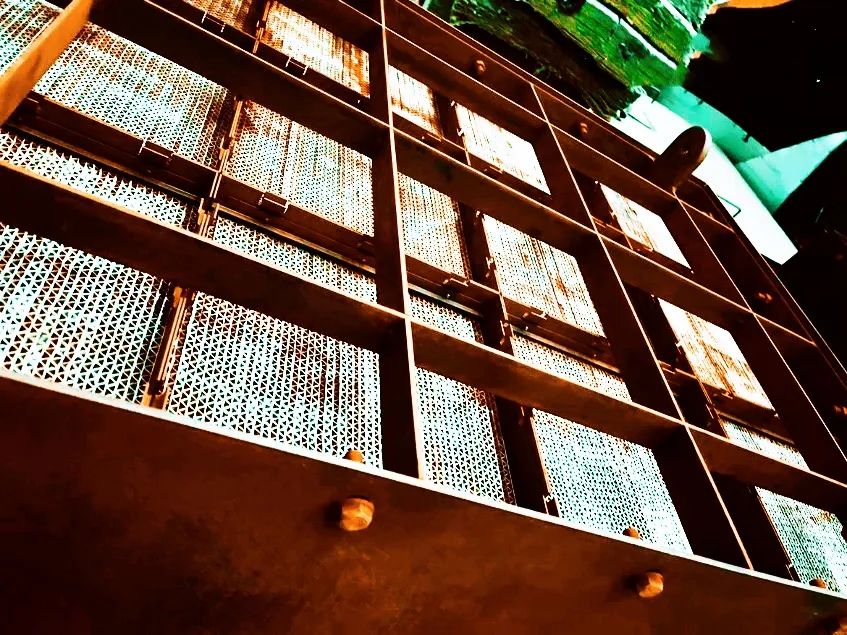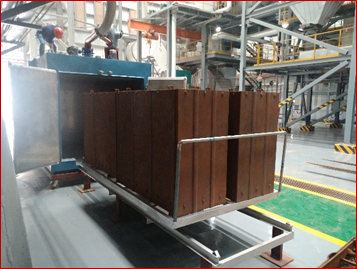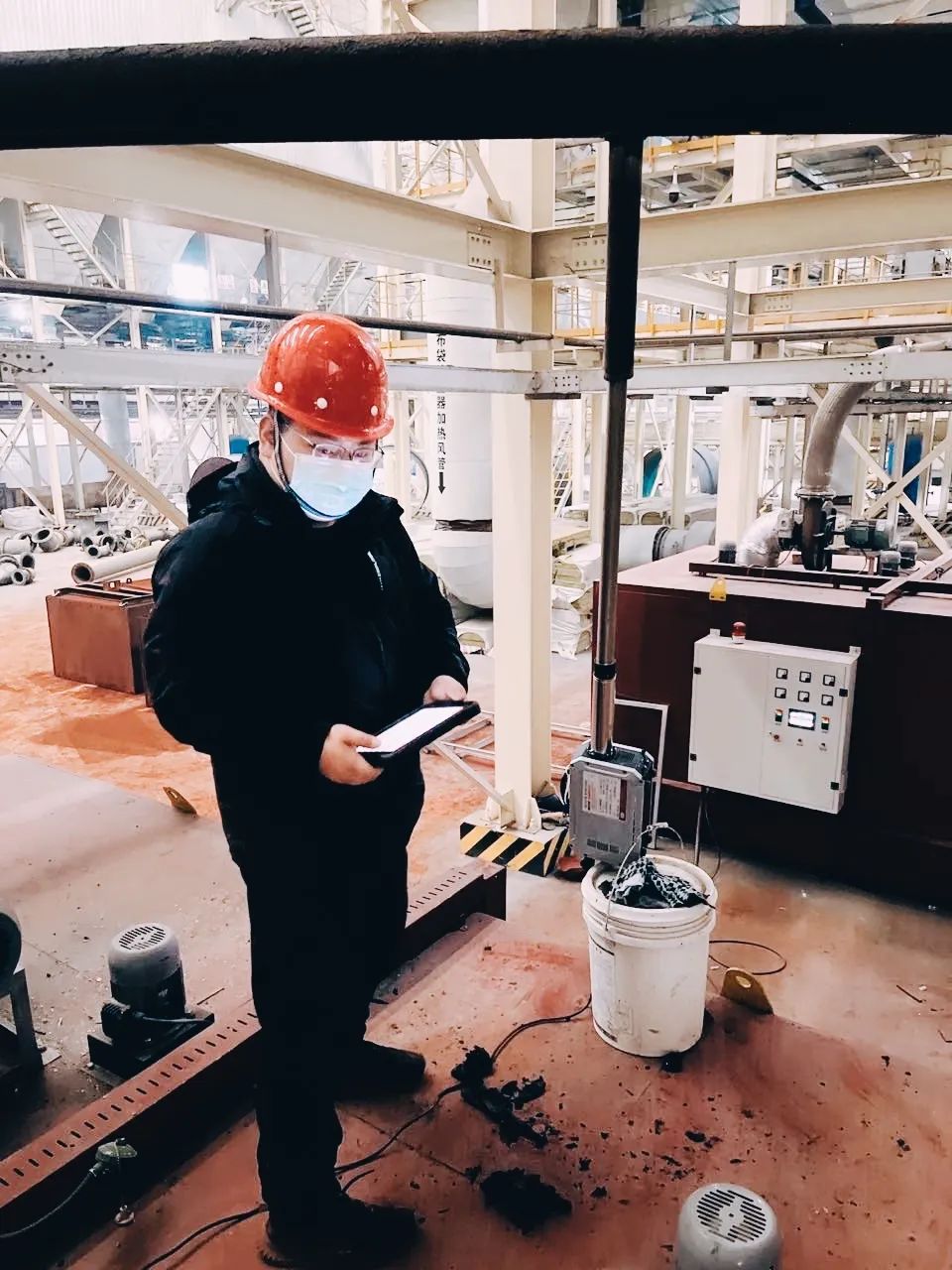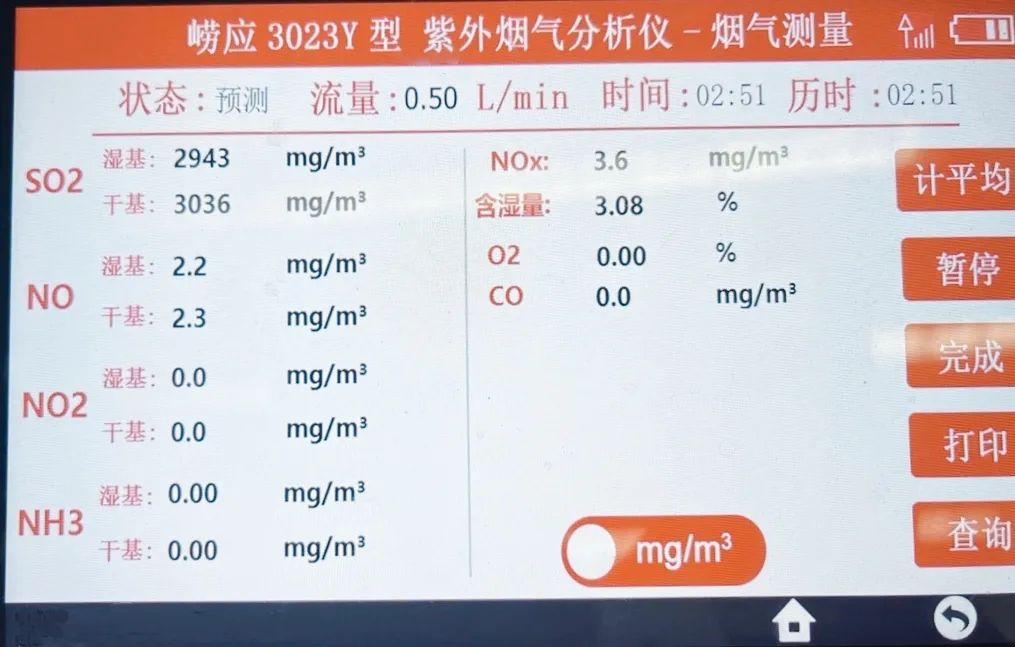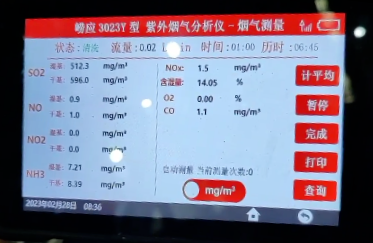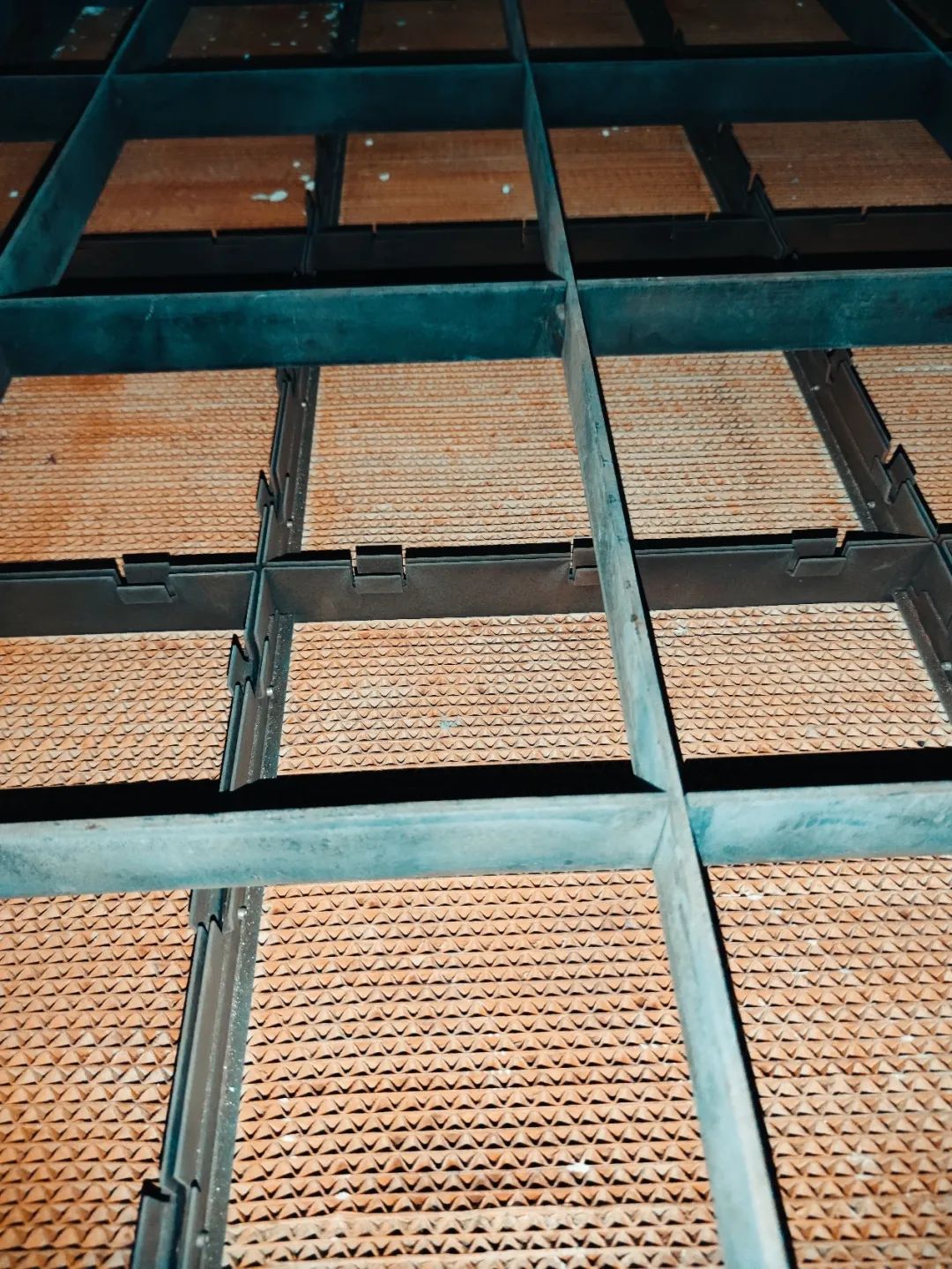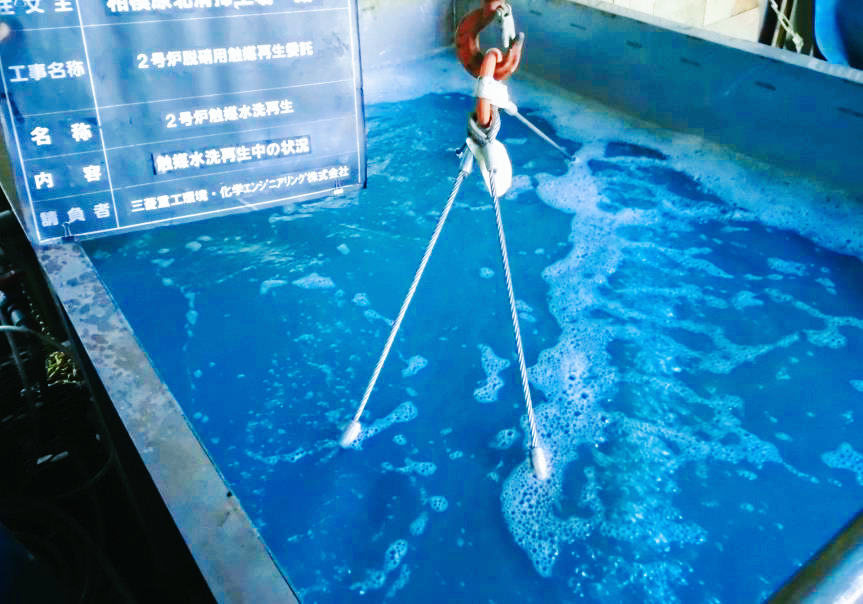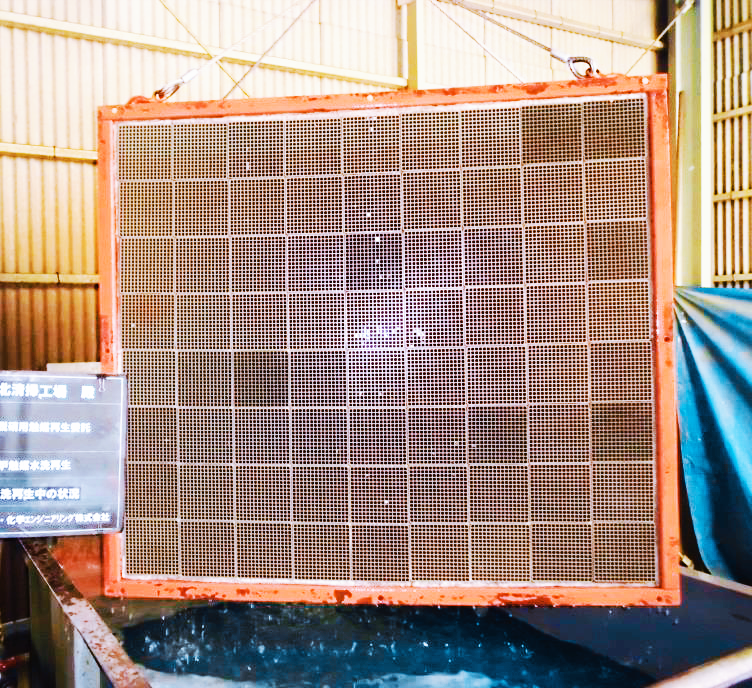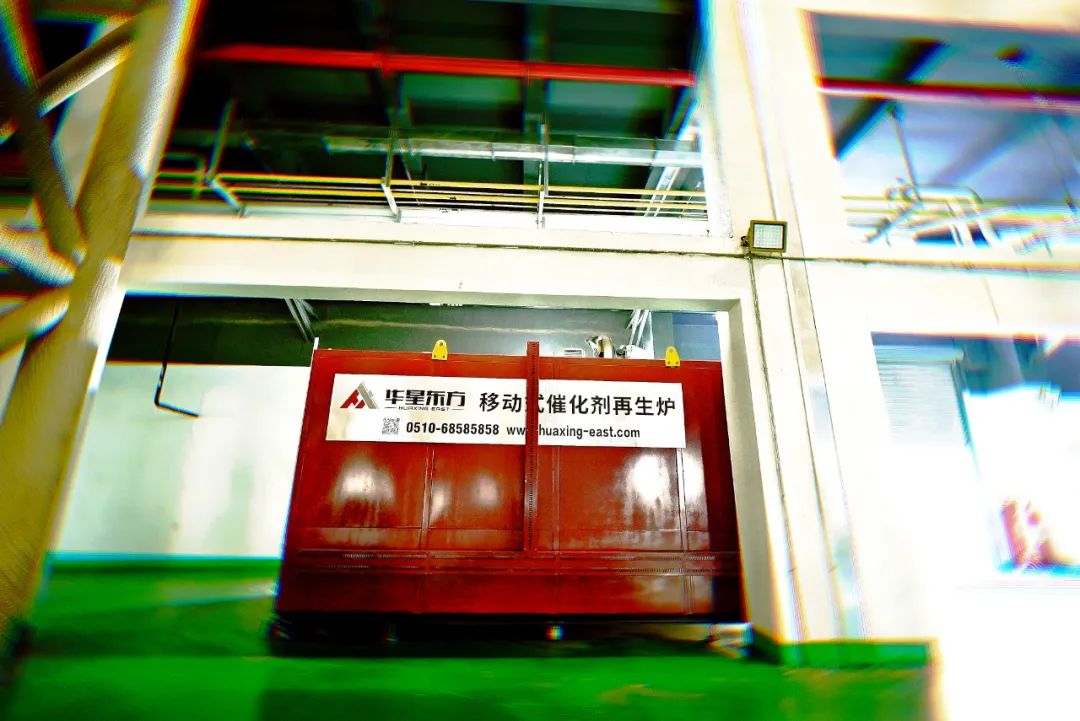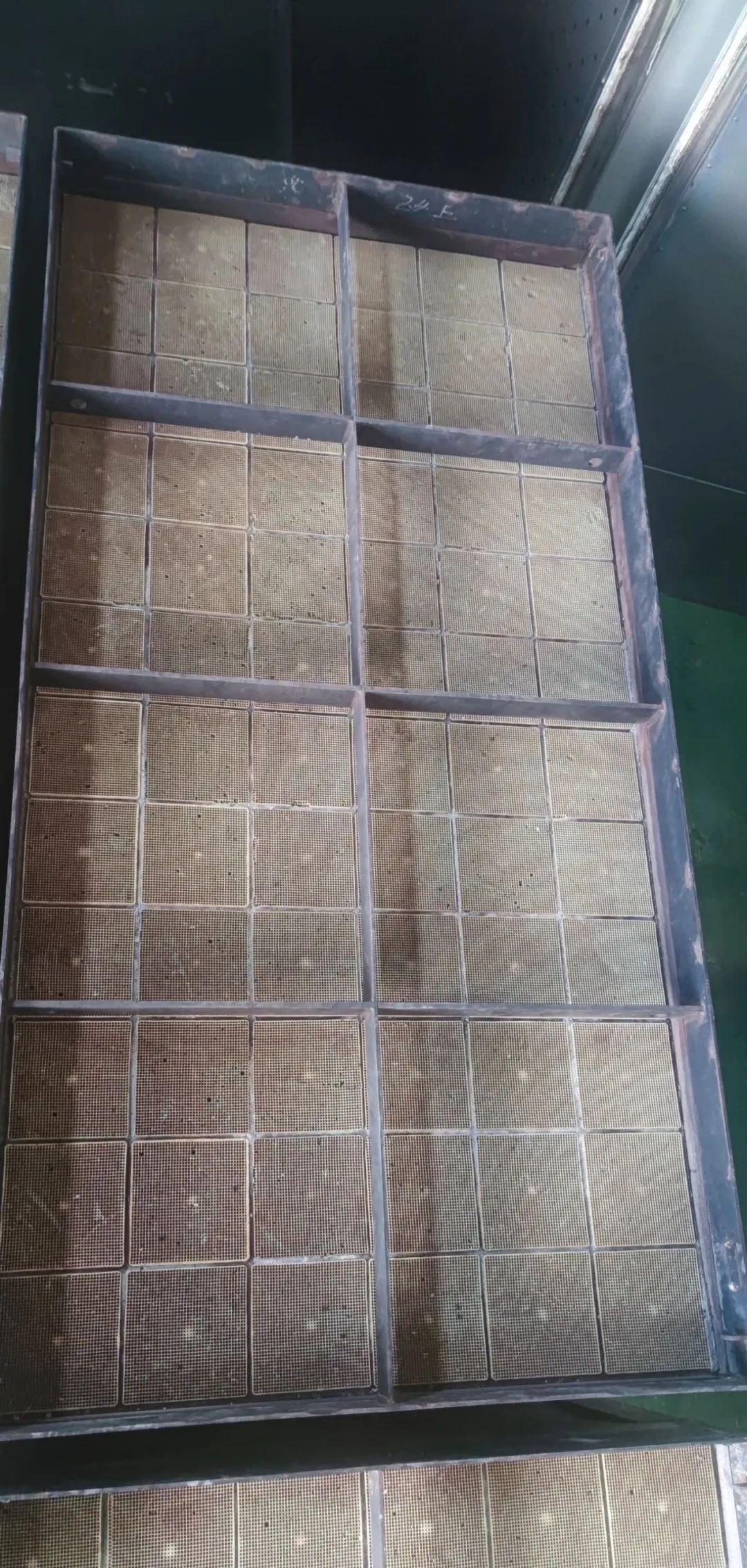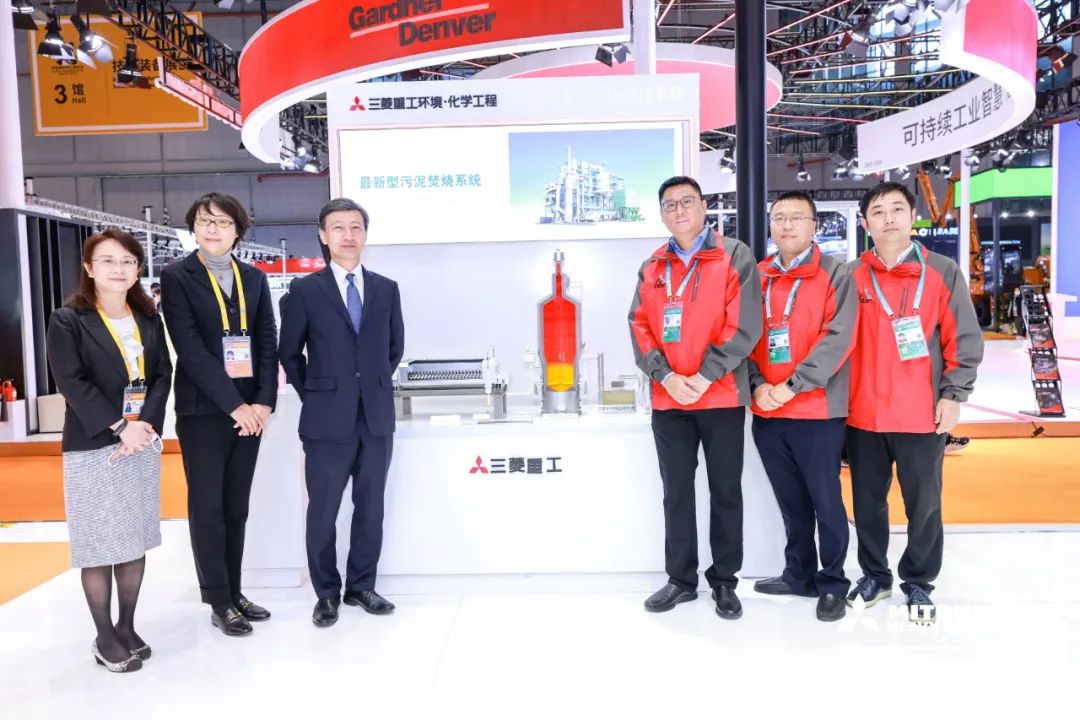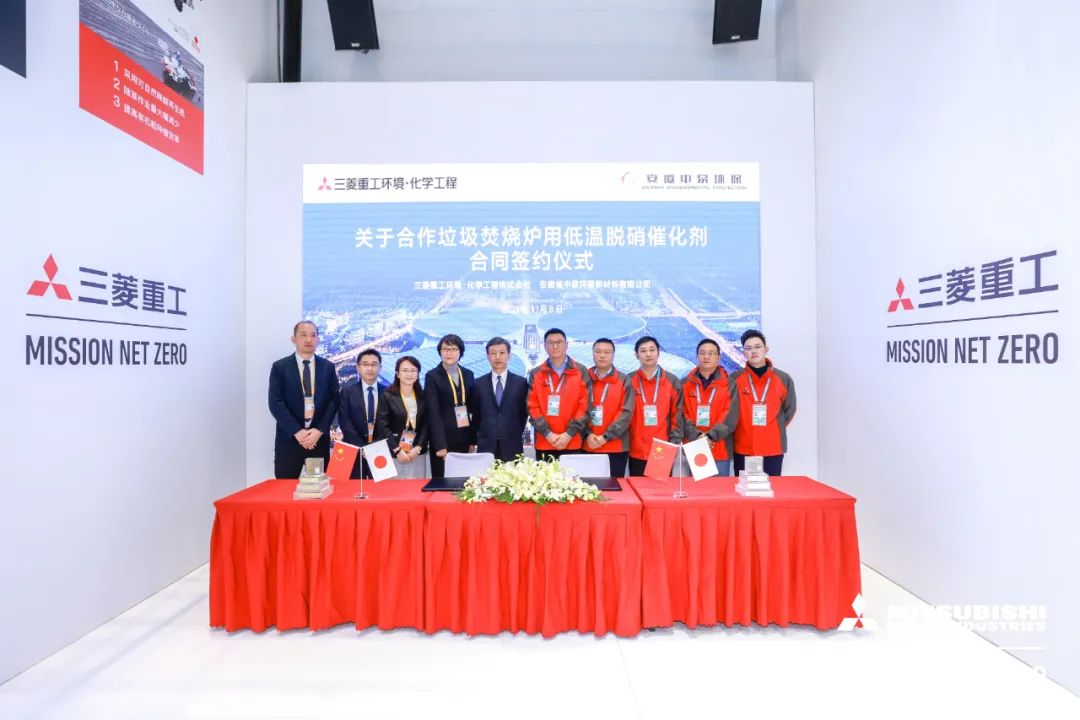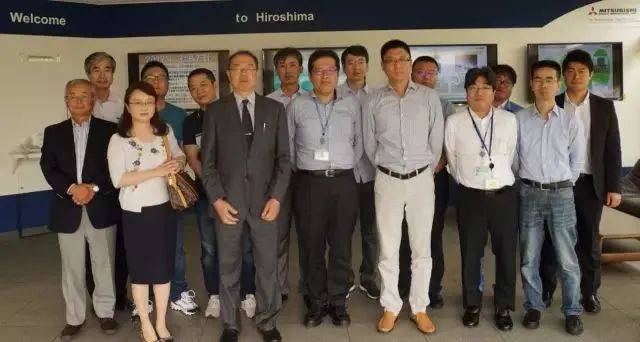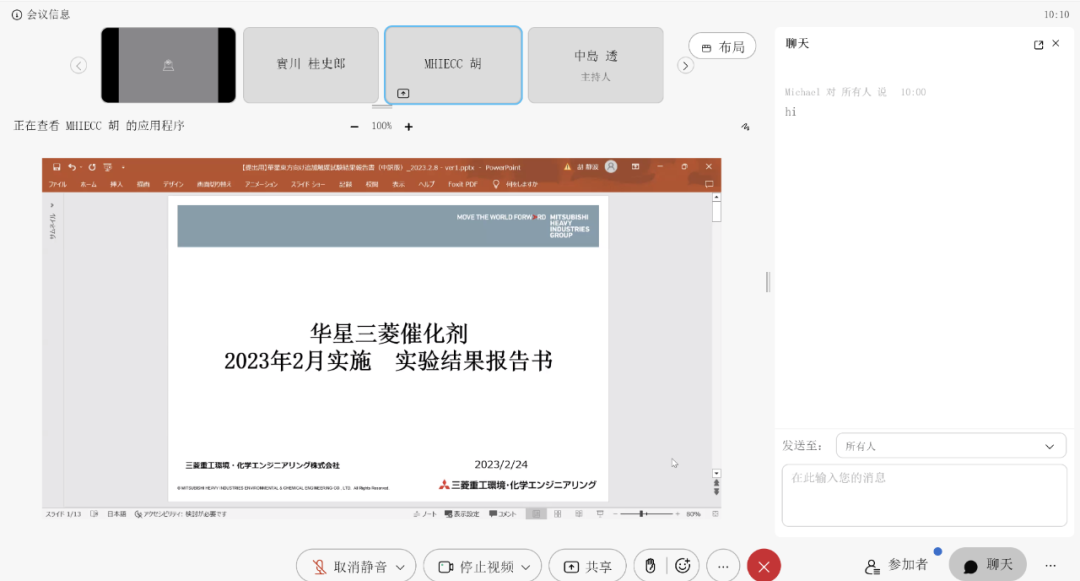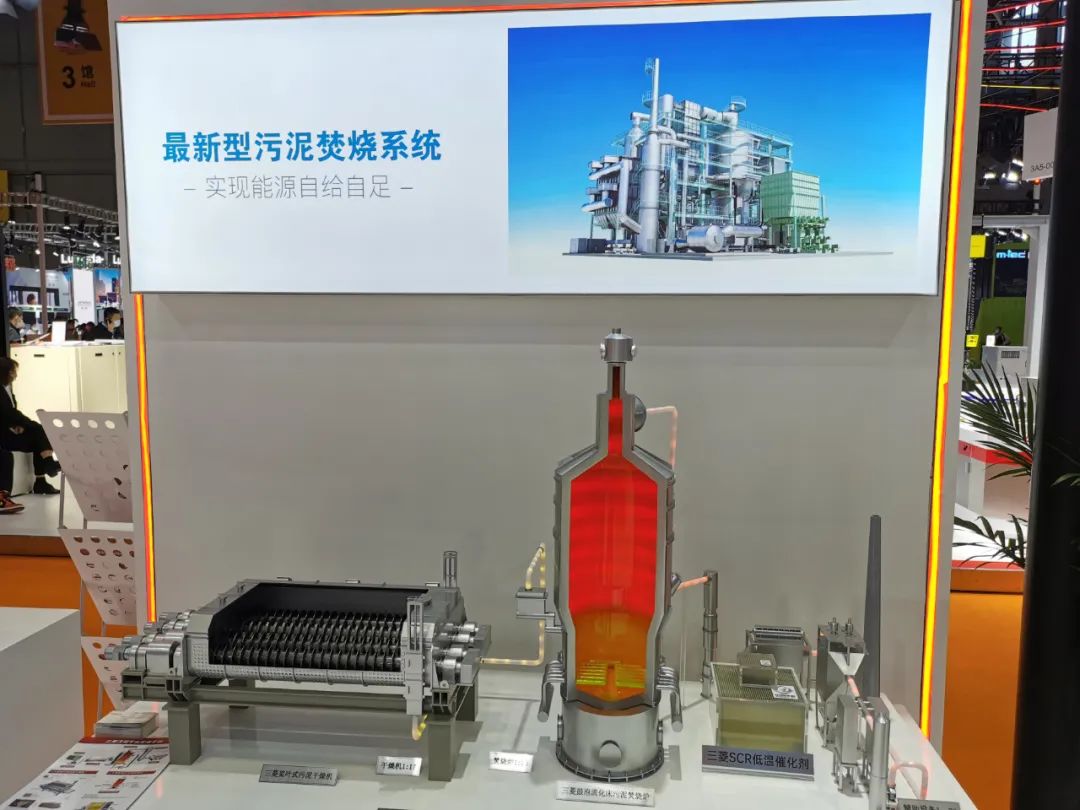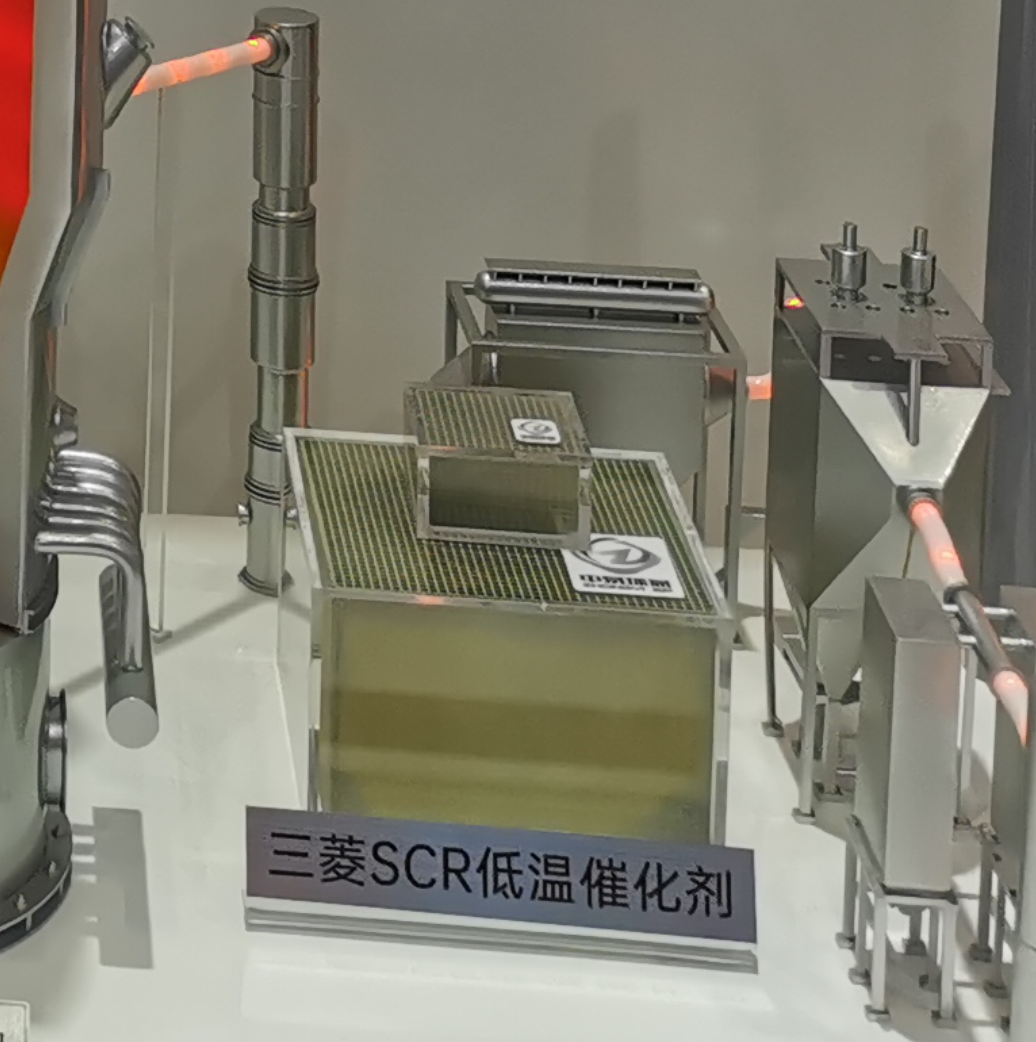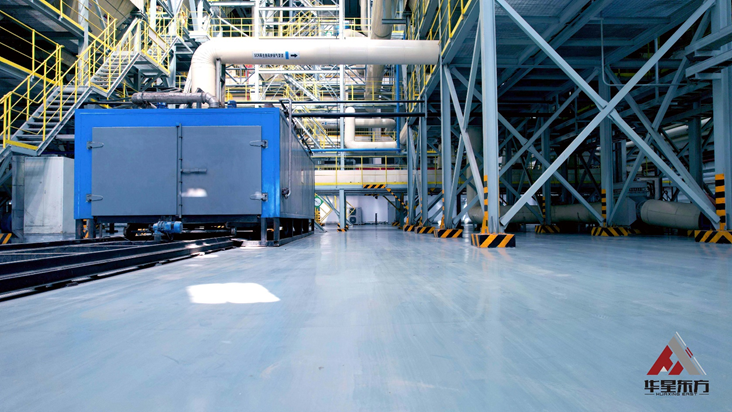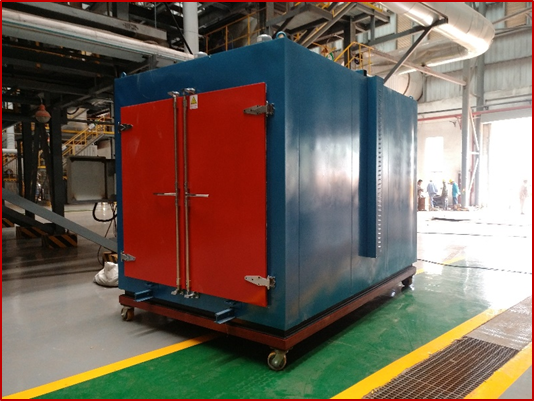The catalyst offline regeneration solution from Jiangsu Huaxing-east has run 6 years since the launch of Nanjing Jiangbei waste incineration plant. During this period, Huaxing has continuously deepened and improved the catalyst offline regeneration techniques powered by service ingenuity, and developed mobile catalyst offline regeneration equipment and on-site regeneration service. In this field, Huaxing's technical strength has been fully recognized by the market.

Catalyst offline regeneration is a technique to regenerate and reuse the catalyst contaminated by ammonia bisulfate (ABS).In the catalyst offline regeneration process of Taizhou Wangneng waste incineration plant, 2 of 4-module mobile regeneration devices, which can simultaneously process 8 modules, were set up on-site. The contaminated catalyst is transported to the catalyst offline regeneration furnace by forklift. The regeneration time can be set according to the severity of contamination. After the regeneration process, the concentration of SO2 and NH3 at the exhaust outlet will be tested as the proof of regeneration completion. In the process of offline catalyst regeneration, Huaxing also provides customers spare catalyst and shutdown maintenance, so that customers can start the boiler quickly. ( Jiangsu Huaxing-east's 8-module offline regeneration furnace is under development and will be put into operation shortly )
Catalyst type: corrugated plate catalyst
Catalyst module size: 1839x925x1230 mm
Maximum temperature: 420 ℃
1.Working device and exhaust pipe in place before regeneration
2. Surface cleaning of catalyst module
3. Enter the regeneration furnace
4. Exhaust detection during regeneration
5. Catalyst surface check after regeneration
Corrugated plate catalyst
In case of chemical contamination and failure of the catalyst, Huaxing also developed offline water-washing regeneration process. The chemical deactivation of the catalyst caused by alkali metals, alkaline-earth metals and heavy metals can be solved by deep cleaning and active re-implantation, giving catalyst short-term activity to meet the demand of denitration process.
offline water-washing
Honeycomb catalyst
Catalyst offline regeneration service for Jiande Pufa waste incineration power plant
Catalyst type: honeycomb catalyst
Catalyst module size: 1839x925x1350mm
Maximum temperature: 420 ℃
In 2016, Huaxing reached a technology transfer agreement with Mitsubishi Heavy Industries (MHI) of Japan, which authorized the transfer of advanced ultra-clean emission technology of flue gas cleaning (FGC) to Huaxing. As a leading company in the field of waste incineration in the world, MHI owns advanced FGC technologies, such as single-tower dual-cycle wet scrubbing, low-temperature flue gas denitration, catalyst offline regeneration, as well as relevant engineering experiences. Huaxing has successively introduced the production and manufacturing technology of MHI's wet scrubbing, low-temperature SCR denitration, third-generation low-temperature denitration catalyst ( Exclusive license in China ), and catalyst offline regeneration ( Exclusive license in China ). These technologies are mainly applicable to flue gas generated by municipal waste, hazardous waste, and sludge incineration.
The catalyst imported from Mitsubishi Heavy Industries also have market references in many leading plants in China, such as Shanghai Laogang Phase II, Shenzhen East, Beijing Shunyi, Wuhan Qianzishan Phase I, etc. In addition to the cooperation with Mitsubishi Heavy Industries in the technology transformation, Huaxing also acts as the exclusive licensee of Mitsubishi Heavy Industries in China to sell the imported catalysts.
Mitsubishi Heavy Industries Environment · Chemical Engineering Co., Ltd. Visiting and Meeting
Jiangsu Huaxing-east and Mitsubishi Heavy Industries continue to cooperate in the research and development of catalysts
Jiangsu Huaxing-east's catalyst offline regeneration system has covered many projects nationwide including Puyang, Qingdao, Xi'an, Xuzhou, Linyi, Lijiang, Yibin, etc. Catalyst offline off-site regeneration system: Nanjing, Shishou, Pingyang, Yichun, Fengcheng, Fuzhou, Chongming, Haiyan, Jining, Beijing, Wuhan, Caofeidian, Jiande, Ankang, Shijiazhuang, Taizhou, etc.
